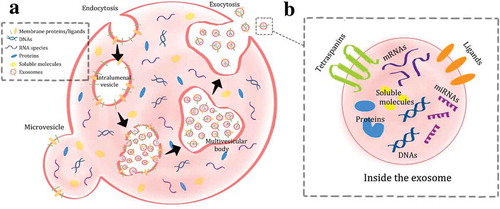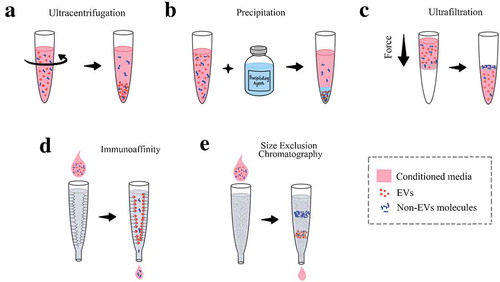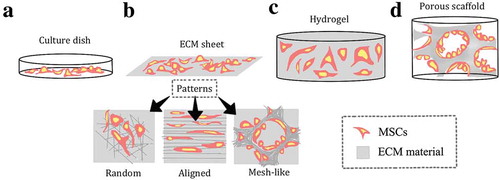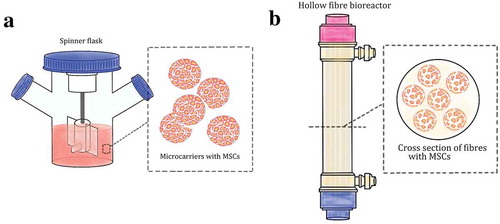Figures & data
Figure 1. Biogenesis and release of extracellular vesicles, both microvesicles and exosomes (A). The contents of the exosomes are shown as well (B).

Figure 2. Common methods in isolating the extracellular vesicles. Ultracentrifugation is the method often utilised in experiments (A). Precipitation involves the use of an agent that allow for the pelleting of EVs (B). Ultrafiltration uses a filter to separate the EVs from the other molecules based off pore size in the filter (C). Immunoaffinity uses antibody to capture the EVs based on their surface markers (D). Size exclusion chromatography separate the EVs from the non-EVs molecules with a packed column of certain materials (E).

Figure 3. The different forms of an extracellular matrix and their interactions with the cells. The tissue culture treated plastic surface is the most common surface for culturing the MSCs (A). The ECM sheet can be in form of decellularised native ECM or an artificial matrix, which can include different oriented fibres (B). A hydrogel can be manufactured from the decellularised ECM or a chemical mixture for culturing seeded or encapsulated MSCs (C). The porous scaffold is the most similar to the native environment of the MSCs, perhaps allowing the most suitable culture environment (D).


